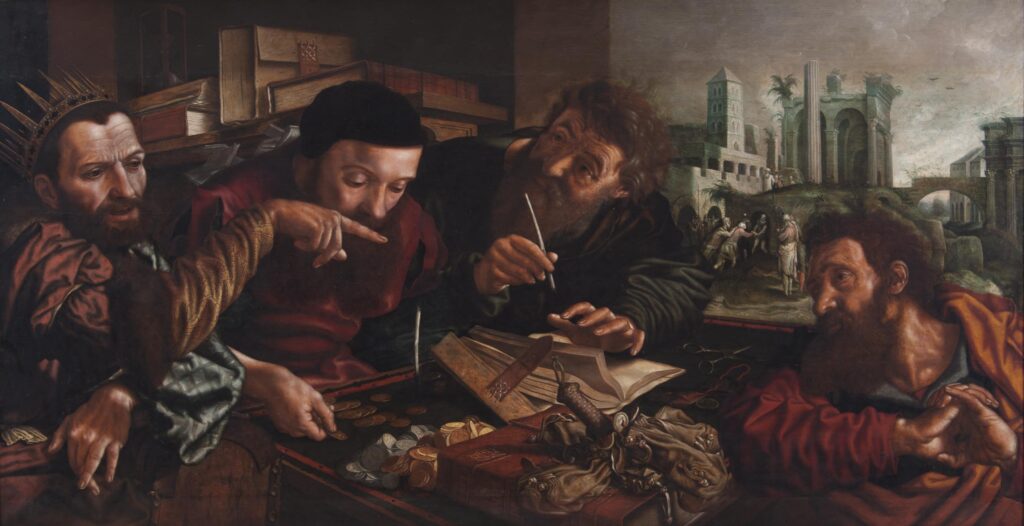This cantata was composed for the 22nd Sunday after Trinity, with its first and only documented performance on October 24, 1723, during Bach’s first year in Leipzig. Scholars believe that some content could have come from material composed previously for Weimar.
The Gospel for this Sunday is Matthew 18: 23-35, which talks about being pardoned one’s debt and, in turn, pardoning debt owed to us (the “Parable of the Unmerciful Servant”). The libretto, by an unknown poet, refers to the sinfulness of humankind and how it deserves punishment (God’s “Rache”, “revenge”, being the strong image used by the librettist), but clemency is received and the “debt is credited” through the blood of Jesus. The libretto includes several references to the debt metaphor inspired by Matthew’s text, as well as many other biblical references.
The first movement is a literal citation (dictum) of the Old Testament (Hosea 11, verse 8), followed by four movements of free poetry and closed with a semantically related stanza of a hymn by Johann Heermann of 1630.
Like other cantatas of the first Leipzig cycle, this one is a “solo cantata” and it’s scored for relatively small forces: an instrumental ensemble of oboes, strings and continuo, and four vocal soloists (soprano, alto, tenor and bass, with the tenor only required for the final chorale). Adding to the similarity to other works of this period, Bach added a horn to the ensemble which has a solo part in the opening aria and reinforces the soprano line in the closing chorale.
The cantata opens with an aria on the Hosea dictum, which summarizes the entire narrative arc of the cantata – God considers punishing Ephraim (a region of North Israel, here a proxy for humankind) for their sins, but opts for clemency. Bach gives the aria to the bass, a frequent choice for the voice of God. The text is illustrated by creating tension with rumbling textures in the basso continuo line, sighing motifs in the oboes, and using fermatas to suspend the music on the unanswered questions. As God announces his compassion in the second half of the movement, the tension in the music subsides somewhat.
Following this introductory movement, the alto and the soprano each get a recitative / aria pair. The alto delivers both movements accompanied just by continuo. The text states the reasons for God’s punishment of humankind in strong, uncompromising and direct language, including a reference to the servant of the parable who was incapable of forgiving after being forgiven himself. This unsettling mood is reflected in the music, especially in the aria, with its jagged bass line, long melismas on “Rache” (“revenge”), and the use of triplets against binary rhythms to create tension.
The soprano recitative that follows starts still in a place of despair, with a high note on “schrecket” (“frightens”), but as it mentions the blood of Jesus, it delivers the inflexion point of the cantata, underscored by the last phrase shifting to arioso form. The aria is accompanied by oboe and continuo, configuring a trio, and it delivers its hopeful, prayer-like text in the form of a dance, in triple time with repeated ascending scales and staccato high notes that suggest hope and optimism.
Given that the cantata does not require a choir, the closing chorale is often performed with one voice per part, augmented with the instruments doubling the parts. It opens in minor mode but it highlights the cantata’s message of hope by finishing in major using a “picardy third”.
